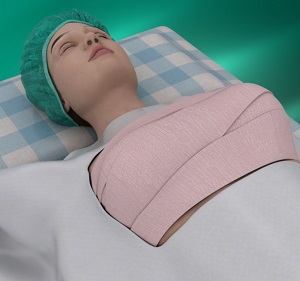
Post-surgery
You will be moved to the recovery room after surgery and closely monitored by a recovery room nurse. For your comfort and safety following surgery, we remind you of the following:
- Your doctor will prescribe pain medications to keep you comfortable, and antibiotics to prevent infection.
- Keep the operated site clean and dry. You may shower once the dressings are removed unless otherwise directed by your breast surgeon.
- You can start taking your personal medications along with the prescribed medications by your surgeon.
- You may have wound drains in place following surgery to drain blood and fluid.
- You may have nausea and vomiting after surgery. If this happens, you will be given medications for relief.
- Your breast may be discoloured if you have had a sentinel node biopsy, which includes the use of blue dye. This is short-term and usually fades away. Also, your urine may turn blue in the immediate post-operative hours.
- Your physiotherapist will advise you on exercises to help you regain the movements of your arm and shoulder.
Postoperative Complications
Bruising and Haematoma
Bruising is quite common after any surgery, however, it disappears gradually. Sometimes, blood accumulates in the tissues around the wound resulting in swelling, hardness, and discomfort called a haematoma. Haematomas often resolve, but sometimes large haematomas may require surgery.
Wound Infection
Infection can develop at any time until the wound is completely healed, which usually takes 2-3 weeks. Tenderness, swelling, redness, pus discharge, and elevated body temperature are symptoms of a wound infection that should be reported to your surgeon.
Seroma: Seroma formation is the most frequent complication after breast cancer surgery or lymph node dissection. It presents a collection of fluid under the arm or in the chest wall. A seroma may cause discomfort and is usually reabsorbed by the body over time.
Change in Sensation
You may experience a loss or change in sensation over the inner side of the upper arm following the removal of underarm lymph nodes.
Cording
Some women have an unusual sensation of a tender cord running across the armpit down to the elbow or wrist, referred to as cording. It occurs due to the hardening of lymph vessels. Physiotherapy exercises stretch the cords and help improve the symptoms.
After surgery, you are likely to have some pain and swelling during the recovery period.
